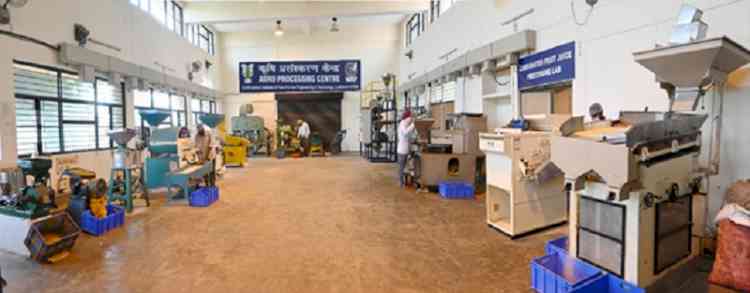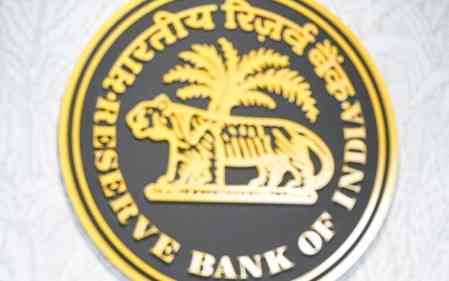Post-harvest processing and storage of cereals and pulses at production catchment
In the 2019-20 crop year, the country witnessed record-high food grain (including wheat, rice, pulses, and coarse cereals) output of 297.5 million tonnes

Ludhiana, January 22, 2022: In the 2019-20 crop year, the country witnessed record-high food grain (including wheat, rice, pulses, and coarse cereals) output of 297.5 million tonnes. However, fourth advance estimate says a rise of 3.74 per cent to a new record of 308.65 million tonnes in the crop year 2020-21, on the better output of rice, wheat, maize and pulses production. However, mere production is not highly remunerative for the farmers and rural economy in general. A record procurement of 85 million tonnes of food grains was done by Government agencies during 2019-20. However, more than 200 million tonnes food grains are stored by the farmers, food processing industries and wholesalers, which witness several storage related challenges. Post-harvest Processing is the sunshine sector of the Indian economy due to its higher potential for growth along with likely socio-economic impact due to employment and income generation capability.
The quality of food grains during storage depend upon maturity at the time of harvest, environmental conditions, moisture content of grains, type of storage structure, storage practices, biotic factors, duration of storage, etc. Destructive agents, such as insects/ pest, bacteria, mold/ fungi, enzymes, mites, rodents, and birds play crucial role in quantity as well as quality deterioration during storage. A moisture content of less than 12 % is general considered safe for most of food grains for storage up to 3 years. Similarly stored grains insects, such as granary weevil, maize weevil, rice weevil, grain borers, Khapra beetle, rusty grain beetle, bruchids etc. cause severe damage during storage. Some preventive measures to control storage losses include; (1) harvest at right maturity (2) drying to safe moisture limits (3) proper storage management including aeration to maintain grain moisture <12% and avoid heat built-up (4) regular monitoring/inspection of the stored grains, and fumigation to control insect population. Safe storage at farm level can be done by adopting proven and scientific storage practices: (a) Hermetic storage in multi-layer high-density polyethylene bags; (b) Modified atmosphere storage by managing oxygen level<3% and increasing carbon-dioxide level >30%; (c) Grain disinfestation using dielectric, microwave and radiofrequency heating (d) Application of inert dusts, such as Silicon dioxide or Diatomaceous Earth; (e) Irradiation; (f) Use of plant extracts, such as clove oil, neem leaves, etc.; and (g) adoption of proven storage structures, such as Pusa bin, Metal bin, and Cocoon systems.
Fumigation is one of the most commonly used treatment to control insect infestation for stored grains protection. Aluminum phosphide (ALP) @ 3 tablets/ton food grains for 7 days in airtight conditions can successfully manage stored grain pests. However, this treatment must be done in airtight conditions and ALP tablets should be placed in cloth sachet prior to application and no one should be allowed to enter in the store during the entire treatment period. Malathion 50 EC and Deltamethrin 2.5 WP sprays can also be applied on the bags as prophylactic treatment against invasion of insect from outside. Spray of Dithane M-45 and Benlate @ 3g/kg grain manages seed borne pathogens. Zinc phosphide, Barium carbonate, Red squill, ANTU, and anti-coagulants such as Bromadiolone and Brodifacoum in a single dose are very effective in controlling rodents. However, such chemicals should be stored with utmost precautions because these are lethal for human and animals.
Metal bin is very common and made by either galvanized iron sheets or aluminum sheets in 1.5-2 tonnes capacities. The structure is suitable for storage of wheat, paddy and maize in different climatic conditions. Its reflecting surface has an additional advantage in keeping grains cool by radiating heat quickly. Household Insect Trap developed by Indian Agricultural Scientists is very effective tool to control insects in stored grains at small scale. The device is very handy. It has multiples holes (perforations) through which insects enter in the trap and reach to the stem of the trap and die. Primary grain processing is one of the most important practice, which plays important role for management of cereals and pulses at farm level since these commodities are durable in nature. Processing of such commodities does not require very high technical skills and can be performed near the production catchemnt.
Food grains and pulses are not consumed without any processing. Majority of them are bought by the consummers in semi-processed form. The traditional means and machines of processing are un-economical, inefficient and in some cases uncapable of handling the increased volume. It is high time that we redefine food processing as ‘processing operations done with the commercial interests’.
The requirements of farm-level processing operations are different from that of industrial operations. The material handling capacity of on-farm processing equipment is lower than that of their industrial counterparts. Several technologies and machines have been developed under the ages of Indian Council of Agricultural Research for on-farm primary and secondary processing of cereals and Pulses. With the efforts of Agrucltural enginners and researchers along with industry partners, the major primary and secondary processing machines such as cleaners, destoners, magnetic seperators, pearlers, flour mills, mini rice mills, packaging machines etc. are available with various capacities ranging from 100-1000 kg/h. These machines are very much suitable for on-farm processing of cereals, millets etc into different intermidieate products. Processing of food grains can be done in the form of cereals and pulse-based products that involve traditional knowledge & inputs giving it the edge over other processed products in the market. Low moisture traditional products such as wheat flour (atta), milled rice, parboiled milled rice, dal, semolina, extruded snacks, murmure (puffed rice), namkeens, multigrain atta, besan, vadi/badi, papad, sattu, whole roasted grains, cereal flakes, puffed & popped products etc., can easily be produced with little technical training and have great market demand and entrepreneurial potential for on-farm processors. The benefits of multigrain flour are well known to consumers and it is being prepared in India for ages. This knowledge can be converted into a business by standardizing the process and appropriate marketing to tap into the customer base.
Milling of pulses is a process of removal of outer husk/hulls and splitting the grain into two halves. There are about 15000 pulse mills in India with average processing capacities of 10–20 t/day. Existing milling machines are of high capacity and may not be suitable for adoption by small and marginal farmers. Lack of awareness is the major limitations for on-farm processing of pulses at small scale. Basically two milling methods i.e. wet and dry are followed for milling of different pulses. Different organisations of the country within ICAR, CSIR and others have visualized and developed the concept of small capacity dal mills. Capacity of these dal mills varies between 50-200 kg/h after specific pretreatments. The dehulling of pulses is usully done at around 10% moisture content irrespective of the machines used. The traditional method of milling gives dal yield of 65 to 72% only in comparison to 82-85% potential yield, and 12-20% produce is lost in the form of broken and powder. By increasing the use of dal mills at small-scale processing units, it is easy to control milling losses, thus, higher dal recovery potential could be realized. The establishment of dal milling units in rural catchments has the potential to promote rural entrepreneurship, generate employment opportunities, enhance rural income and ultimately, prevent migration to the urban area.
Agro Processing Center (APC) is one of the commercial initiative that enables farmers to undertake primary & secondary processing of agricultural produce, especially of durable food grains including cereals, millets, pulses & oilseeds. The products are generally intermediate in nature and have longer shelf life enabling sufficient time for handling, transportation, and marketing. Typical APC complex houses cleaning and grading machines, milling machines for food grains, spices grinding systems, oil expellers, mini rice mills etc.. The APC can be customised as per the availability of raw materials and market access to processed products. On farm processing should be encouraged for cereals, millets and pulses as it involves minimum investment, efforts and quality control. In the era of online literacy, there are vast opportunities for sales and marketing of processed products through online portals. The Kisan Haat, Roadside displays & markets are coming up as part of Agricultural Tourism and may boost the on-farm processing. According to an estimate done by ICAR-CIPHET, economic return to an entrepreneur through APC is about Rs. 5.25 Lakh per annum and one APC generates employment to around 10 persons (direct, 4 Nos + indirect, 6 Nos) for a period of 240 days in a year.
Central goventment is also supplementing the efforts to increase level of processing in the country through different schemes such Pradhan Mantri Formalisation of Micro food Processing Enterprises (PMFME) Scheme, One District One Product (ODOP) initiative. The Sub-Mission of Agricultural Mechanization also has provision for promotion of post-harvest processing machinery. The financial support for establishment of sorting & grading unit, primary processing center, supply chain services including e-marketing platfomrs, community farming assets (APCs and custom hiring centers) etc., can be obtained under ‘National Agriculture Infra Financing Facility’and should be further encouraged.
Indian Council of Agricultural Research through its various Institutes and Schemes has done remarkable job by developing various processing equipments & tools of scales appropriate to various stakeholders viz. farmers, cottage scale entrepreneurs, self-help groups, FPOs, etc. Technologies for processed products, standardizing the process parameters for traditional products, small scale storage tools & practices, suitable for on-farm processing have also been developed. These technologies are available at its variuous Institutes and can be obtained through technology transfer, trainings, entrepreneurs development programmes etc. Moreover the council is also providing technical support for manufacturing of good quality machinery and maintenance of quality of the produce after different stages of processing. The council supports the motto “Produce-Process-Prosper”.


 cityairnews
cityairnews 










